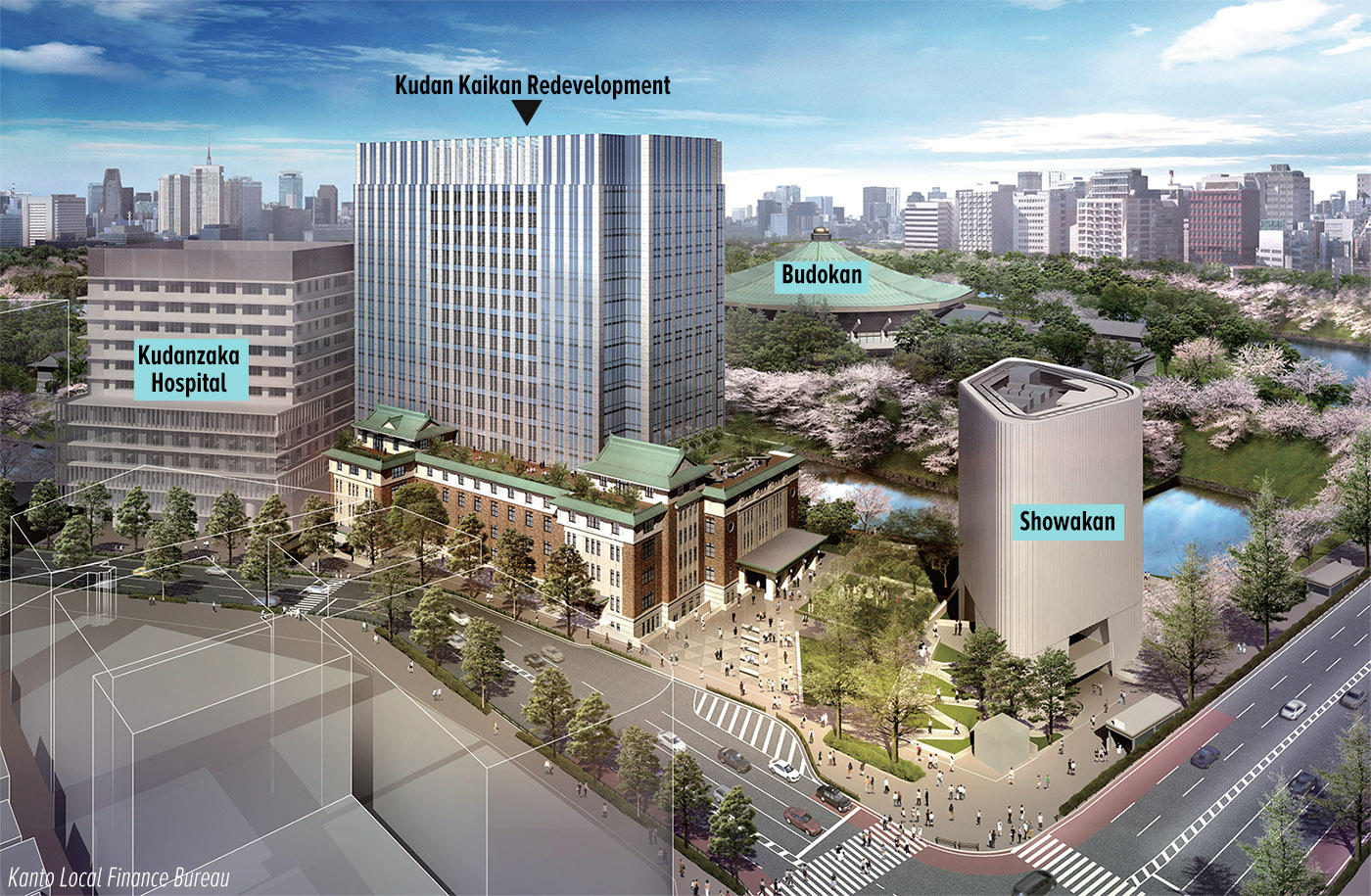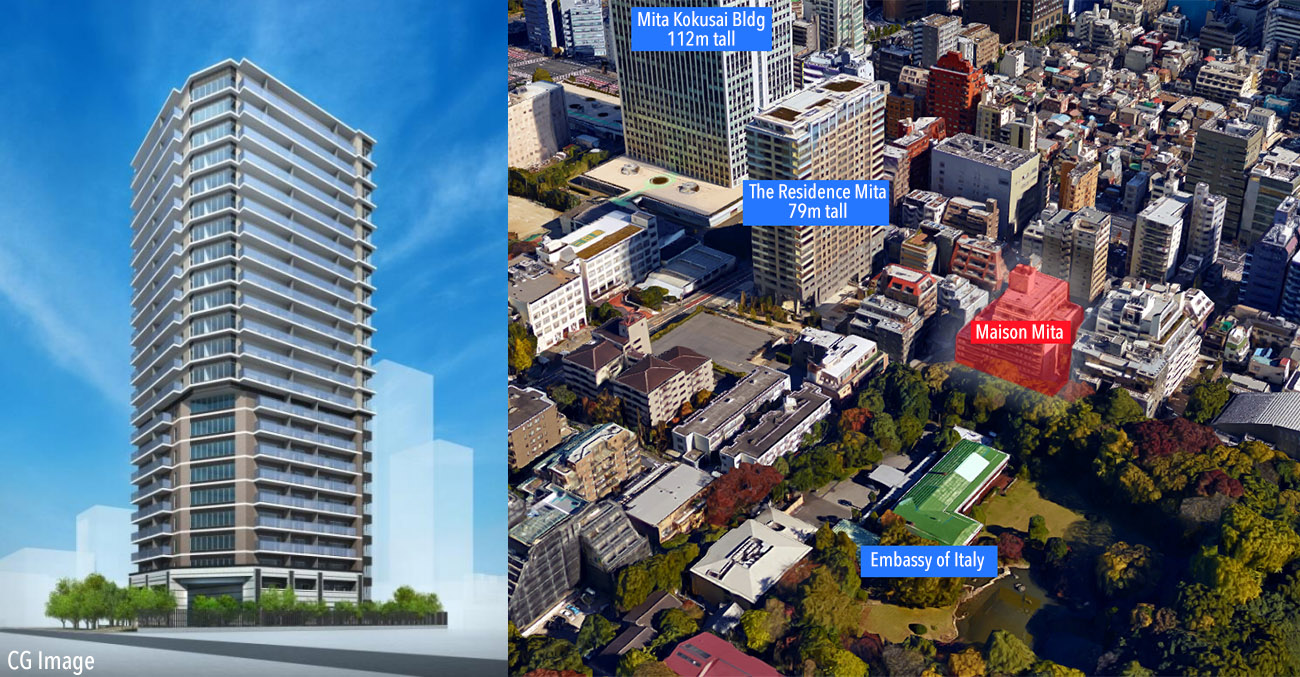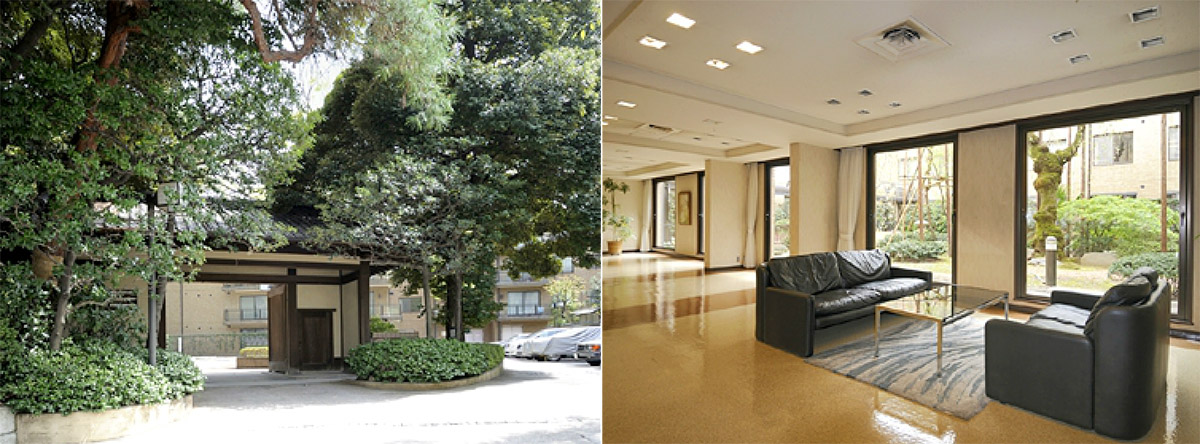Omotesando's Seihou Building to be redeveloped
 A 51-year old retail and public housing building alongside Aoyama Dori Avenue in Omotesando will soon be rebuilt. The 10-storey Seihou Building was built in 1967 and has a total floor area of 6,075 sqm (65,000 sq ft). It is jointly owned by a subsidiary of Mizuho Bank and the Urban Renaissance Agency.
A 51-year old retail and public housing building alongside Aoyama Dori Avenue in Omotesando will soon be rebuilt. The 10-storey Seihou Building was built in 1967 and has a total floor area of 6,075 sqm (65,000 sq ft). It is jointly owned by a subsidiary of Mizuho Bank and the Urban Renaissance Agency.
The new building will have a total floor area or 16,000 sqm (172,000 sq ft), more than 2.5 times the size of the older building.Read more
Kuwait Embassy to be rebuilt

Tokyo will lose another one of Kenzo Tange's works, with the Kuwait Embassy building in Tokyo due to be demolished and rebuilt next year.
The 47-year old building was designed by Pritzker Prize-winning architect Kenzo Tange (1913-2005) and completed in 1970. Tange is considered one of the most significant architects of the 20th century, designing numerous modernist buildings across Japan and the world.
The 4,100 sqm, 7-story embassy building is located in Minato ward’s Mita district. The upper floors housed the Ambassador’s Residence, while lower floors contained offices. Construction is scheduled to start in April 2018, with completion by April 2020. The new building will be 5-storeys with a total floor area of 3,500 sqm. Suga Architects Office has been selected as the design firm for the new building. Plans on their website show a glass building with a dramatic draped rooftop.
Historic Kudan Kaikan redevelopment plans announced

On September 21st, the Kanto Local Finance Bureau announced that Tokyu Land had won the competitive bidding process for the redevelopment of the Kudan Kaikan building in central Tokyo. The bidding price will be announced after Tokyu signs the contractural agreement in March 2018.
The developer will lease the 8,700 sqm block of land under a 70-year fixed term and will build a high-rise office tower on the site. The north-eastern corner of the original Kudan Kaikan building will be preserved and retrofitted using a base-isolation system (menshin-kozo).
Maison Mita to be redeveloped into high-rise

Maison Mita, a 67-unit, 49-year old condominium in central Tokyo’s Mita neighbourhood will be redeveloped into a 77m tall, 23-storey high rise by both Mitsubishi Jisho Residence and Asahi Kasei Realty & Residence. Demolition of the current building is expected to start in December 2017 and the new building is due for completion by December 2020.
Apartment owners had been discussing redevelopment for the past 10 years.
Apartments in the older building ranged in size from 34 ~ 108 sqm, with a mixture of studio and family-oriented layouts. The building was developed by Kyoei Life Insurance and completed in 1968. Kyoei developed several Maison-named condominiums in central Tokyo in the 1960s, 70’s and ‘80s. The insurance company filed for bankruptcy with liabilities of 4.6 trillion Yen in 2000 in what was said to have been the country’s biggest bankruptcy since WWII.
Luxury condo to replace Yoyogi Terrace Apartment block

Foretseine, a subsidiary of Mori Trust, will be demolishing the vintage Yoyogi Terrace Apartment rental building in Shibuya and replacing it with a luxury condominium.
Details on the project, including the construction schedule, have yet to be announced, but it is expected that the new building could be completed by 2020 2022.Read more
Heritage-listed house in Sendai to be demolished

The owners of a heritage-listed house in Sendai will soon demolish the old home and several other historic buildings to make way for a city-planned road that will cut through the site. The buildings include the former main house, workshop and storehouses for the 140-year old Mondaya company - a manufacturer of traditional Sendai-tansu cabinets.Read more
2.2 Traditional machiya houses in Kyoto are demolished each day

Kyoto City is losing its traditional machiya townhouses at an alarming rate, with an average of 2.2 of these symbolic houses demolished each day.
On May 1, Kyoto City announced that approximately 5,600 machiya have been demolished over the past seven years. In 2016, a survey found that there were 40,146 surviving machiya in the city.
Of the surviving machiya, 14.5% are vacant and not occupied by owners or tenants, an increase of 4 points from the previous city survey in 2009. Kyoto City’s vacancy rate across all types of housing was 14% in a 2013 survey.Read more
